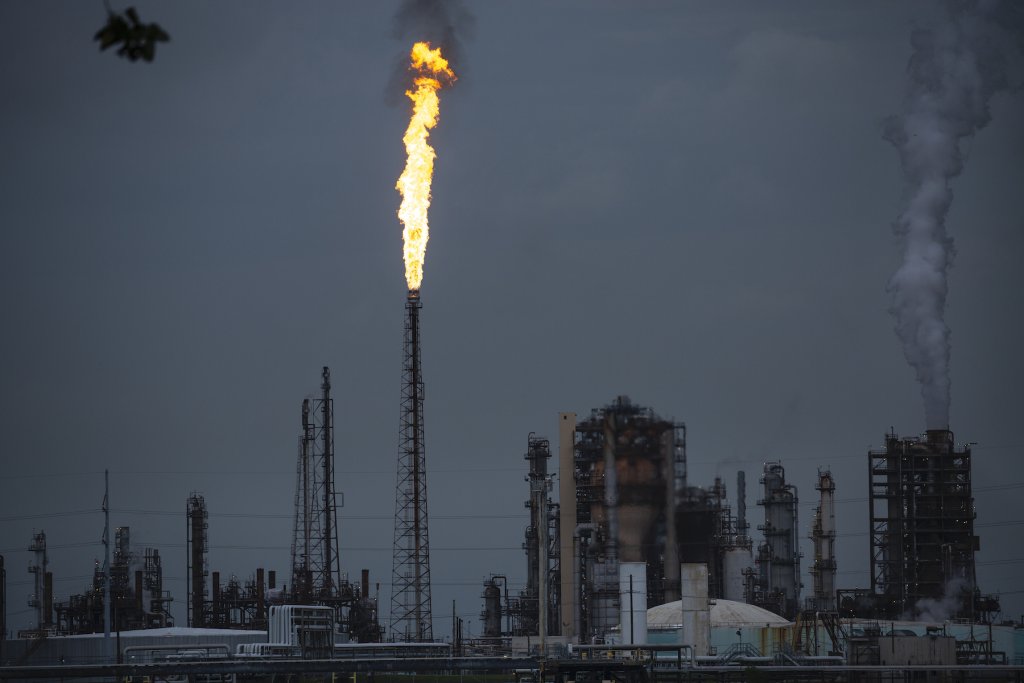
U.S. Environmental Protection Agency announces final rules for charges on methane emissions by oil and gas companies. (Photo by Drew Angerer/Getty Images)
The U.S. Environmental Protection Agency has announced a final rule that will implement the Waste Emissions Charge on large-scale emitters of methane in the oil and gas sector if they exceed set limits.
The charge is part of the Methane Emissions Reduction Program created through the Inflation Reduction Act. The Tuesday announcement from the EPA said the agency will “incentivize” companies to “conserve valuable energy resources” and reduce methane emissions as they come into compliance with the Clean Air Act.
“The final Waste Emissions Charge is the latest in a series of actions under President Biden’s methane strategy to improve efficiency in the oil and gas sector, support American jobs, protect clean air, and reinforce U.S. leadership on the global stage,” said EPA Administrator Michael Regan.
GET THE MORNING HEADLINES.
According to an agency press release, the EPA estimates this action will reduce cumulative methane emissions by 1.2 million metric tons through 2035.
The Waste Emissions Charge applies to petroleum and natural gas facilities that emit more than 25,000 metric tons of carbon dioxide equivalent — a measurement of greenhouse gasses — of methane per year.
The charges start at $900 per metric ton of wasteful emissions in 2024, then increase to $1,200 for 2025, and to $1,500 for 2026 and beyond, on emissions that exceed specified methane levels.
According to the final rule, the emission amounts are calculated using data reported to the EPA under the Greenhouse Gas Reporting Program, which was revised in May 2024 to increase the accuracy of the methane emission reports.
Once companies come into compliance with methane emission reductions under the Clean Air Act, passed in March 2024, they are exempt from the charges.
The finalized rule creates more flexibility for oil and gas companies to come into compliance and implements exemptions for unreasonable delays and plugged wells.
The rule also allows companies with common ownership of multiple facilities to “net” their emissions, or, offset one facility that is emitting in excess, with another facility that is below the emission limits.
Facility owners or operators are held responsible with the Waste Emissions Charge which, once collected by the EPA, will go to the general U.S. Treasury.
The Inflation Reduction Act additionally allocated over $1 billion in funding to help monitor and control methane emissions from the oil and gas sector. The EPA will partner with the U.S. Department of Energy to incentivize and assist companies in making innovative solutions to reducing emissions.
This regulation on the oil and gas industry is one of several that President-elect Donald Trump has said he aims to dismantle once he takes office.
According to an EPA Regulatory Impact Analysis from 2023, methane emissions from the oil and natural gas industry represented 27% of the total methane emissions in 2019.
Cuts to the emissions of methane, which is a potent greenhouse gas, will create “near-immediate” climate benefits, according to the EPA.
“These actions will help position the United States as the most efficient producer of oil and natural gas in the world and ensure that the industry remains competitive in overseas markets that require a minimum level of emissions performance,” the EPA press release stated.
YOU MAKE OUR WORK POSSIBLE.

